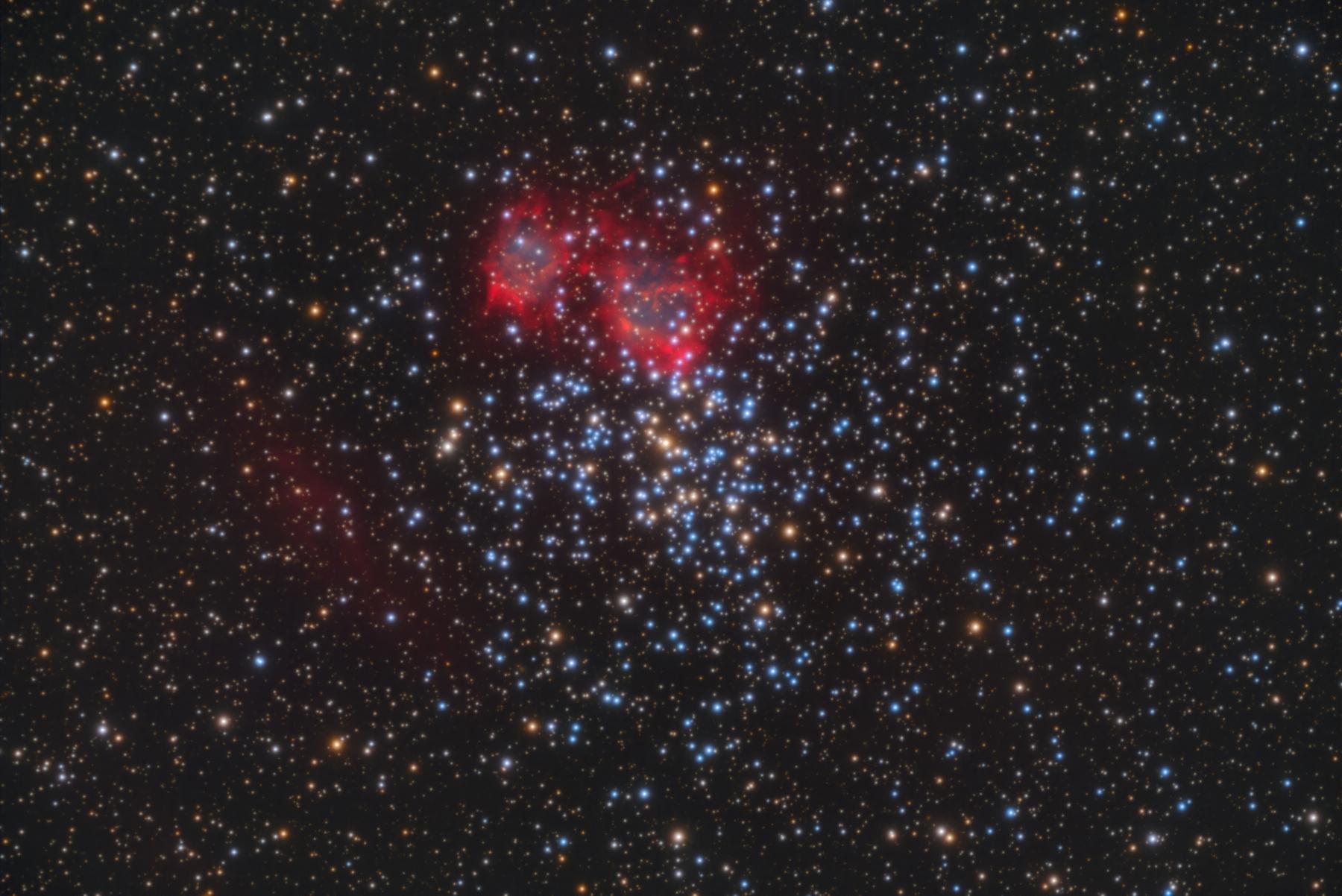Stars similar to our Sun end their lives as white dwarfs. Some of them are so-called surrounded by a planetary nebula, which is actually gas ejected by a dying star. An international research group led by Professor Klaus Werner from the Institute of Astronomy and Astrophysics at the University of Tübingen has, for the first time, examined the central star of a planetary nebula located in an open cluster. The researchers were able to determine the exact mass of material lost by the central star.
There are more than a thousand open clusters in the Milky Way. Each of them consists of hundreds or thousands of stars that formed at the same time from a dense cloud of gas and dust. “The stars in the cluster have the same age, which is of particular importance for astrophysics,” Klaus Werner said. Only their masses differ. “The larger the star, the faster it consumes its nuclear fuel through the fusion of hydrogen and helium. Its lifespan is shorter and it evolves into a white dwarf faster,” he explained.
“Observing a star cluster is like taking a snapshot of the evolution of stars with different masses at the same age,” says Werner. “In astronomy, star clusters can be used as a kind of laboratory where we can measure the reliability of our theories about stellar evolution.” One of the biggest uncertainties in the theory of stellar evolution is the amount of material a star loses during its life. This collective loss is huge. “Stars like our Sun lose less than half their mass by the time they evolve into white dwarfs. However, stars eight times more massive than the Sun lose about 80% of their mass.” Astronomy defines the relationship between the birth mass of stars and the mass of their transformation into a white dwarf as the ratio of initial to final mass.
According to Werner, the mass of white dwarfs in star clusters may be directly related to their mass at birth. Data on very small white dwarfs are particularly valuable because they are the central stars of planetary nebulae. We currently know of three star clusters that have known planetary nebulae. “However, their central stars have not been studied yet because they are all very distant and faint,” Werner said.
The research team used one of the largest telescopes in the world, the 10-meter GRANTECAN telescope located on the Canary Island of La Palma, to study the central star in the Messier 37 cluster and analyze its spectrum. The mass of the star was determined to be 0.85 solar masses, which is greater than the average mass of white dwarfs (0.61 solar masses). The original mass of the star was determined by isochronic fitting, yielding 2.8 solar masses. “The star thus lost 70 percent of its matter during its lifetime,” Werner explained. Another feature of the star is its special chemical composition. There was no hydrogen on the star’s surface, which Werner says indicates an unusual event, a brief, recent explosion of nuclear fusion.

According to Werner, precise determination of the ratio of initial to final mass is of fundamental importance in astrophysics. It determines whether the star will become a white dwarf, a neutron star, or a black hole in a supernova explosion. However, Werner noted that “new generations of stars arise from the ejected matter, enriched with heavy elements as a product of nuclear reactions. The chemical evolution of galaxies and, ultimately, the entire universe depends on it.
source: University of Tübingen
comment












































